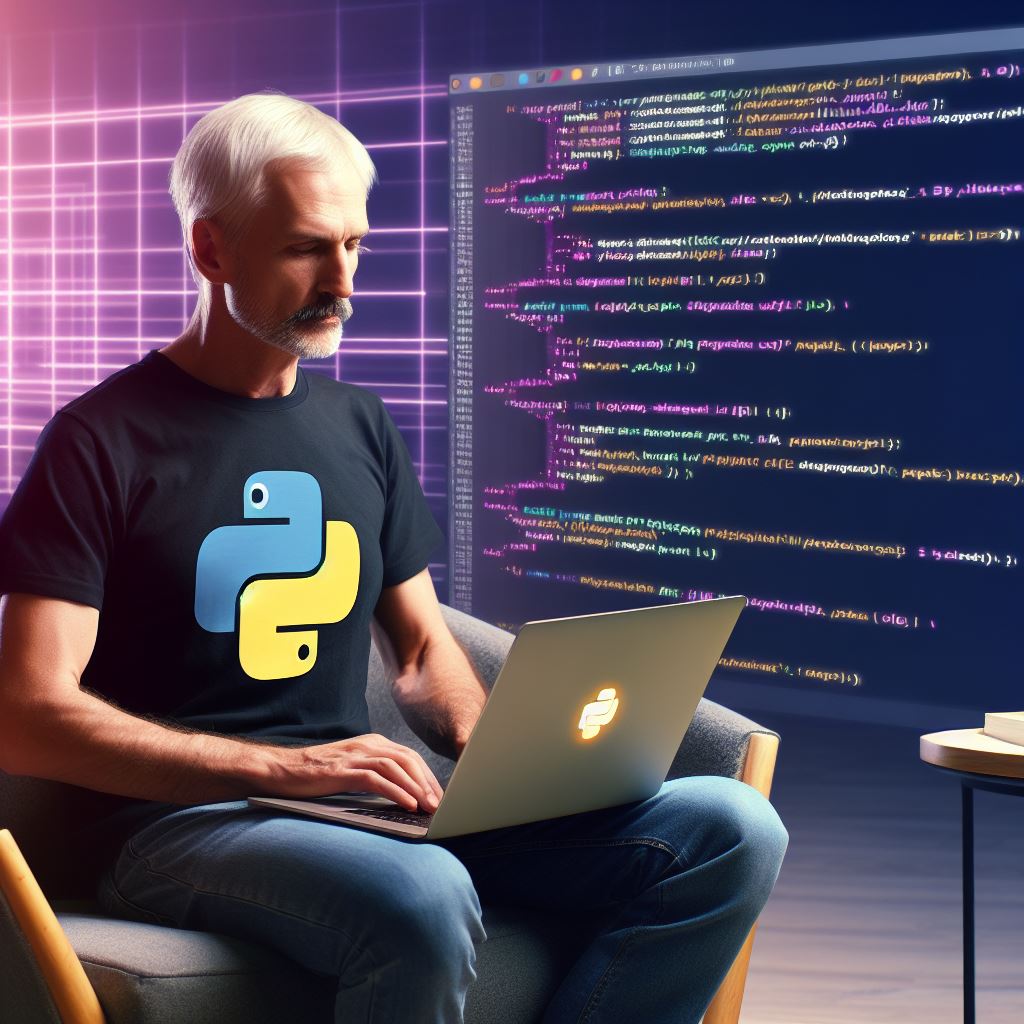Introduction
Understanding C++ is crucial for both beginners and experienced programmers due to its widespread use in various industries.
Practical examples play a pivotal role in helping individuals comprehend and apply C++ concepts effectively.
Why understanding C++ is important
C++ is a powerful and versatile programming language that allows developers to create high-performance software applications.
Proficiency in C++ can open up opportunities for career growth and increase job prospects in fields such as game development, embedded systems, and scientific computing.
Moreover, many existing software systems are built using C++.
Hence, understanding this language allows programmers to contribute to the maintenance and enhancement of these systems.
Additionally, C++ is known for its efficiency and memory management capabilities, making it a preferred choice in performance-critical applications.
How practical examples can help in learning
Learning C++ solely through theoretical concepts can be challenging and overwhelming.
Practical examples provide a hands-on approach, allowing learners to grasp the language’s syntax, functions, and concepts more effectively.
By working through practical examples, learners can see how C++ code translates into real-world applications, facilitating a deeper understanding of its functionality.
Furthermore, practical examples enable learners to troubleshoot and debug their code, improving their problem-solving skills.
Hands-on experience with practical examples helps learners develop and reinforce good programming practices, such as code organization, modularity, and reusability.
This hands-on approach also enhances creativity and encourages learners to think critically when designing and implementing their own solutions.
Therefore, understanding C++ is vital for programmers, and practical examples greatly aid in the learning process.
By combining theory with hands-on experience, learners can become proficient in C++ and leverage its power to create robust software applications.
Tech Consulting Tailored to Your Coding Journey
Get expert guidance in coding with a personalized consultation. Receive unique, actionable insights delivered in 1-3 business days.
Get StartedRead: The Impact of Experience on Coding Job Salaries in the USA
Key Concepts of C++
Variables and Data Types
The foundation of any programming language is the ability to store and manipulate data. In C++, this is achieved through variables.
Variables are containers that hold values of different data types, such as integers, floating-point numbers, characters, and booleans.
Understanding how to declare and initialize variables is crucial in C++ programming.
Variables and data types in C++ serve as the building blocks for any program.
They allow us to store and manipulate values, providing the necessary foundation for further programming concepts.
Whether dealing with simple integers or more complex objects, understanding variables and their data types is essential.
Arrays and Loops
Arrays are a fundamental data structure in C++ that allow for the storage and manipulation of a collection of values of the same data type.
They provide a convenient way to deal with large amounts of data in a structured manner.
Loops, on the other hand, enable us to iterate through arrays or perform repetitive tasks until a certain condition is met.
Arrays and loops complement variables by providing a way to handle multiple values and iterate through them efficiently.
Arrays offer the ability to store collections of related data and access elements by their indices.
Loops, on the other hand, allow us to repeat a certain block of code multiple times, making it possible to process arrays and perform other repetitive tasks.
Functions and Classes
Functions are self-contained blocks of code that perform a specific task.
Build Your Vision, Perfectly Tailored
Get a custom-built website or application that matches your vision and needs. Stand out from the crowd with a solution designed just for you—professional, scalable, and seamless.
Get StartedThey allow for modularity and code reusability, as they can be called multiple times within a program.
Classes, on the other hand, take code modularity to the next level by encapsulating both data and functions into a single unit.
They provide the blueprint for creating objects, which are instances of a class.
Functions and classes elevate code modularity and reusability.
Functions enable us to encapsulate a block of code that performs a specific task, which can be called multiple times within a program.
This reduces code duplication and enhances maintainability.
Classes take this concept further by grouping related data and functions into a single unit.
They act as blueprints for creating objects, allowing for the creation of multiple instances with their own unique data.
Memory Management
In C++, memory management is the responsibility of the programmer.
This means that the programmer must allocate and deallocate memory explicitly, unlike in some other programming languages where memory management is handled automatically.
It is important to understand concepts such as dynamic memory allocation and deallocation, pointers, and memory leaks.
Memory management in C++ requires explicit handling by the programmer.
This responsibility may seem daunting at first, but it provides greater control over memory usage
Dynamic memory allocation allows us to allocate memory at runtime, and deallocation ensures that memory is released when no longer needed.
Optimize Your Profile, Get Noticed
Make your resume and LinkedIn stand out to employers with a profile that highlights your technical skills and project experience. Elevate your career with a polished and professional presence.
Get NoticedPointers are instrumental in managing memory, allowing us to manipulate memory addresses and access data indirectly.
Avoiding memory leaks, where memory is allocated but not released, is crucial for efficient and reliable code.
Most importantly, understanding the key concepts of C++ is essential for effective programming.
Variables and data types provide the foundation, while arrays and loops enhance the ability to handle collections of data efficiently.
Functions and classes enable code modularity and reusability.
Lastly, memory management empowers the programmer with control over memory usage.
By grasping these concepts, one can develop robust and efficient C++ programs.
Read: Using Python in Data Analysis: Real-Life Examples

Practical Examples for Understanding C++
In this section, we will explore practical examples that will help you grasp the concepts of C++ programming.
Through step-by-step explanations and code snippets, you will gain a solid understanding of important topics such as variables, data types, mathematical operations, arrays, loops, and classes.
Simple program to calculate the area of a circle
Let’s begin by examining a simple program that calculates the area of a circle.
We will cover the usage of variables, data types, and mathematical operations in this example.
The program logic will be broken down into manageable steps for better understanding.
To start, we need to declare a variable to hold the value of the radius.
We will use the float data type since the radius can have decimal values.
Next, we will prompt the user to enter the value of the radius.
Once we have obtained the radius from the user, we can calculate the area using the formula: area = π * radius * radius.
In our program, we will assign the value of π as a constant. Finally, we will display the calculated area to the user.
Array manipulation program
In this example, we will explore arrays and loops.
We will demonstrate various array operations using code snippets.
Arrays are used to store multiple values of the same data type.
We will show you how to perform common tasks such as accessing array elements, modifying array values, and displaying array contents.
To begin, we will declare an array of integers.
Then, we will use a loop to initialize the array with user-provided values.
We will demonstrate how to access and modify individual array elements using their indices.
Additionally, we will show you how to iterate over the entire array to perform certain operations.
Implementation of a class for a student record system
In this example, we will delve into the concepts of classes and objects.
We will explain member variables and member functions of a class.
Using a student record system as an example, we will illustrate how classes can be utilized to organize and manage data effectively.
To start, we will define a class called “Student” that contains member variables such as name, ID, and grade.
We will also define member functions to set and retrieve the values of these variables.
Furthermore, we will demonstrate how to create objects of the class and utilize its member functions to interact with the student data.
By going through these three practical examples, you will gain hands-on experience and a deep understanding of important C++ concepts.
These examples will help you apply your knowledge to real-life programming scenarios and build robust programs.
Remember to practice and experiment with the code to solidify your understanding.
Happy coding!
Read: Coding a WordPress Site: Custom Theme Basics
Benefits of Learning C++ through Practical Examples
Enhanced understanding of programming concepts
- Practical examples provide hands-on experience and reinforce theoretical knowledge.
- Working with real code helps internalize fundamental concepts such as variables, loops, and functions.
- Interacting with C++ code helps grasp the syntax and structure of the language.
- Applying concepts to practical scenarios deepens comprehension and builds solid foundations.
Application-based learning promotes problem-solving skills
- Using practical examples challenges learners to solve real-world problems systematically.
- Implementing solutions in C++ hones logical thinking and analytical abilities.
- Practical examples encourage creativity and innovation in finding programming solutions.
- Tackling complex problems improves critical thinking and decision-making skills.
Real-world scenario practice prepares for industry requirements
- Working with practical examples simulates the programming scenarios encountered in professional settings.
- Gaining experience with C++ through practice better prepares individuals for job opportunities.
- Studying practical examples helps in understanding the requirements of software development.
- Developing industry-relevant skills through practical examples increases employability.
By learning C++ through practical examples, individuals can enhance their understanding of programming concepts.
These examples provide hands-on experience that reinforces theoretical knowledge.
By working with real code, learners can internalize fundamental concepts such as variables, loops, and functions.
This approach allows individuals to gain proficiency in understanding the syntax and structure of the C++ language.
Moreover, application-based learning promotes problem-solving skills.
Practical examples challenge learners to solve real-world problems systematically.
Implementing solutions in C++ sharpens their logical thinking and analytical abilities, as they apply programming concepts to practical scenarios.
By working on complex problems, individuals improve their critical thinking and decision-making skills, fostering their overall problem-solving abilities.
Additionally, learning through practical examples prepares individuals for the requirements of the industry.
Working with real-world scenarios simulates the programming challenges encountered in professional settings.
By gaining experience with C++ through practice, individuals become better equipped for job opportunities.
Studying practical examples helps in understanding the specific requirements of software development and equips learners with industry-relevant skills, increasing their employability.
In short, learning C++ through practical examples offers several benefits.
It enhances the understanding of programming concepts by providing a hands-on experience that reinforces theoretical knowledge.
Application-based learning promotes problem-solving skills, improving logical thinking and analytical abilities.
Lastly, practicing with real-world scenarios prepares individuals for industry requirements, increasing their employability.
By incorporating practical examples into the learning journey, individuals can grasp C++ more effectively and excel in their programming endeavors.
Read: 10 Java Coding Examples for Beginners: A Guide
Conclusion
We have covered several key points in understanding C++ through practical examples.
These include the importance of hands-on practice and exploration, which are crucial for mastering the language.
By using practical examples, learners can reinforce their understanding and apply concepts in real-world scenarios.
It is essential to remember that C++ is a programming language that requires practice to become proficient.
While theory is important, practical examples allow learners to solidify their knowledge and gain practical experience.
This hands-on approach enables them to tackle complex problems and write efficient code.
By actively engaging in projects and exercises, learners can push themselves to think critically and problem-solve effectively.
Exploring various C++ applications and libraries will broaden their understanding and unlock new possibilities.
The more learners practice, the more familiar they become with the language, its syntax, and its features.
Moreover, developing a strong grasp of C++ can lead to numerous opportunities in software development and engineering.
The ability to apply practical examples effectively demonstrates proficiency and can be a valuable asset in job interviews and career advancement.
Understanding C++ through practical examples is an effective learning strategy.
It provides a hands-on approach that fosters mastery of the language.
So, I encourage you to continue practicing and exploring further with C++.
Embrace the challenges, seek out new projects, and constantly strive to improve your skills.
With dedication and perseverance, you can become a proficient C++ programmer.




